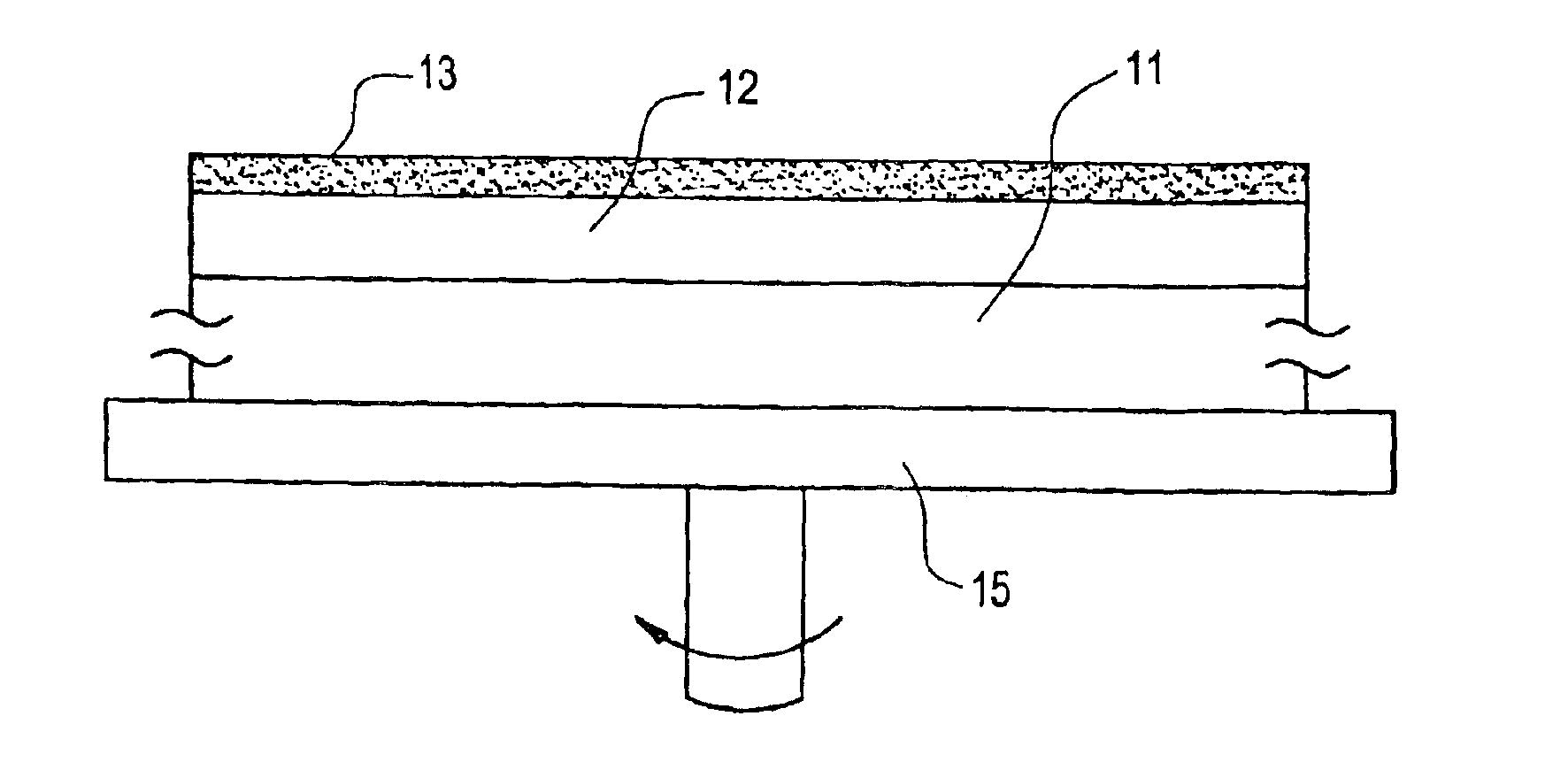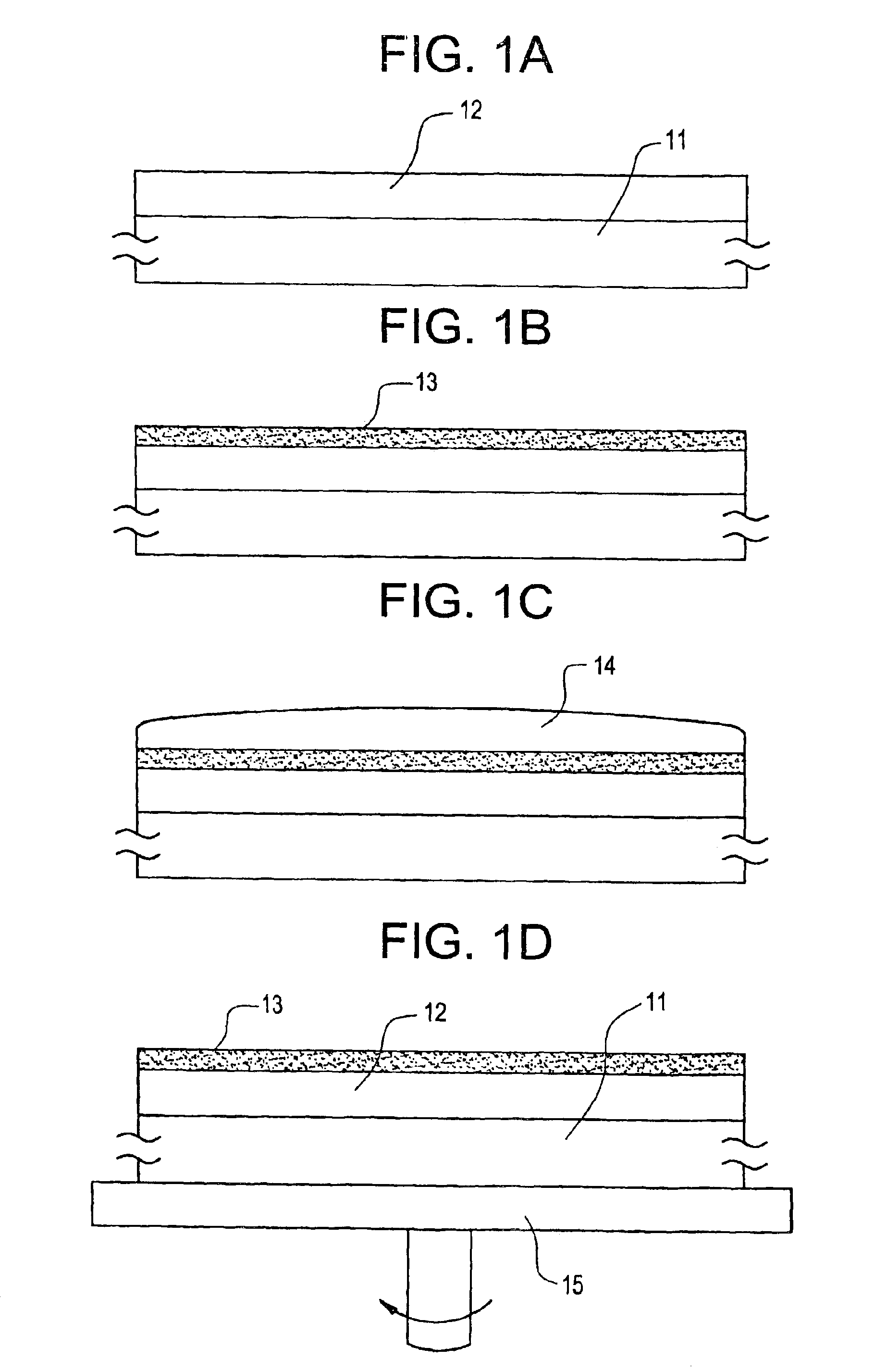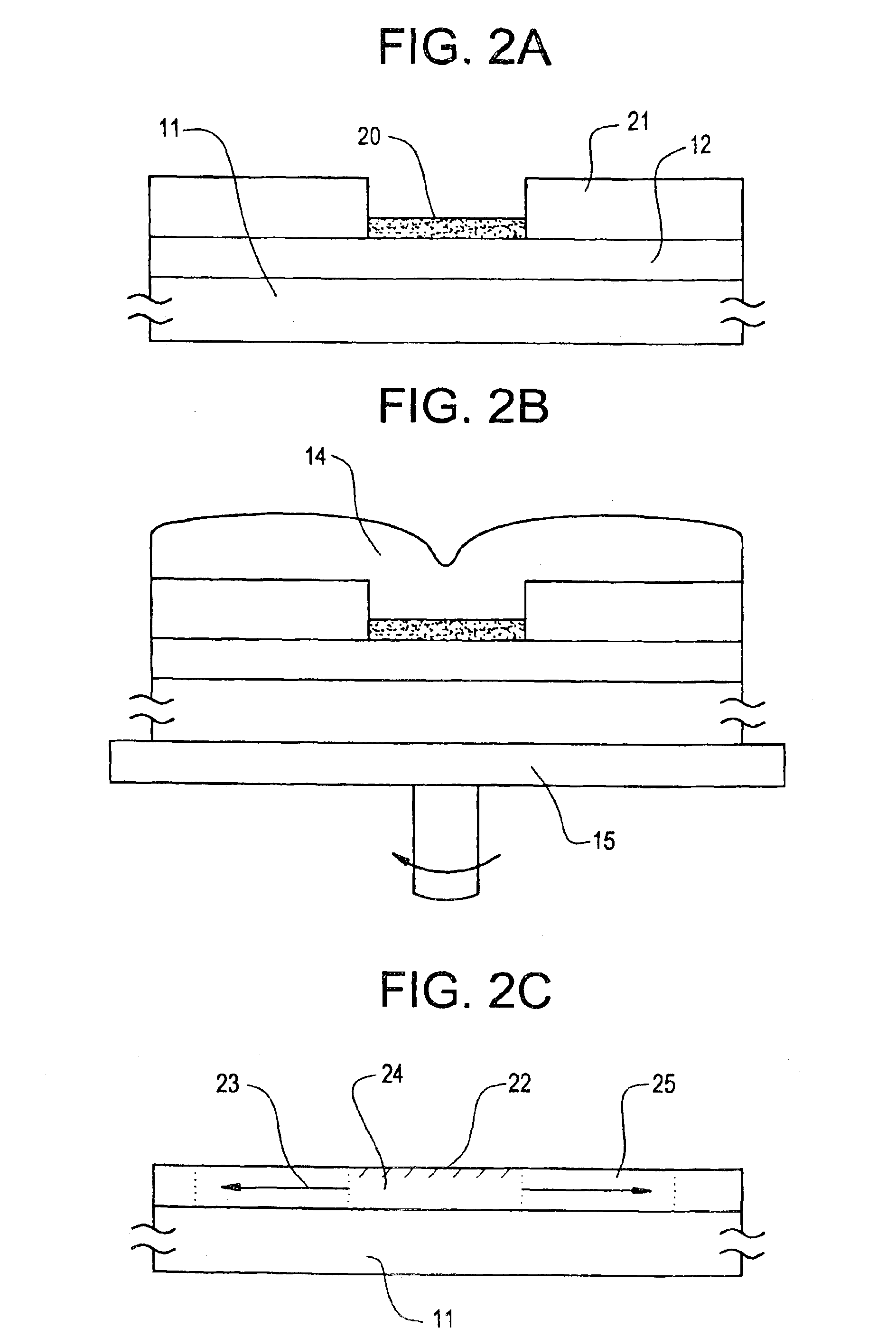Process for fabricating thin film transistors
- Summary
- Abstract
- Description
- Claims
- Application Information
AI Technical Summary
Benefits of technology
Problems solved by technology
Method used
Image
Examples
example 1
[0084]The present example refers to a process which comprises coating an amorphous silicon film with an aqueous solution containing a catalyst element for accelerating the crystallization of the film, and then irradiating a laser beam to increase the crystallinity of the crystallized film.
[0085]Referring to FIGS. 1(A) to 1(D), the process for introducing a catalyst element (nickel in this case) into the amorphous silicon film is described below. A Corning 7059 glass substrate having 100 mm×100 mm in size is used.
[0086]First, an amorphous silicon film of from 100 to 1,500 Å in thickness is deposited by plasma CVD or LPCVD. More specifically in this case, an amorphous silicon film 12 is deposited by plasma CVD at a thickness of 1,000 Å. (FIG. 1(A)).
[0087]The resulting structure is subjected to a treatment using hydrofluoric acid to remove stains and natural oxide film, and an oxide film 13 is deposited thereafter to a thickness in a range of from 10 to 50 Å. In case stains are negligi...
example 2
[0099]The present example refers to a fabrication process according to Example 1, which comprises fabricating a 1,200 Å thick silicon oxide film, and then introducing nickel selectively by using the silicon oxide film as a mask.
[0100]Referring to FIGS. 2(A) to 2(C), the process for fabricating a semiconductor device according to the present example is described below. A silicon oxide film 21 which functions as a mask is deposited of a thickness of 1,000 Å or more, more specifically in this case, at a thickness of 1,200 Å, on a Corning 7059 glass substrate (10 cm×10 cm in size). Considering the thickness of the silicon oxide film 21, however, it is found by the experiments of the present inventors that a film deposited at a thickness of 500 Å can be used without any problem so long as the film is deposited densely. A further thinner film can be used from this point of view.
[0101]The silicon oxide film 21 is then patterned into a desired pattern by means of an ordinary photolithograph...
example 3
[0112]The present invention relates to a process for fabricating a TFT by using a crystalline silicon film obtained by the process according to the present invention. The TFTs according to the present example can be used in driver circuits or pixel portions of an active matrix-addressed liquid crystal display device. Needless to say, the TFTs thus obtained can be applied not only to liquid crystal display devices, but also to a wide field generally denoted as thin film integrated circuits (ICs).
[0113]Referring to FIGS. 3(A) to 3(E), the process for fabricating a TFT according to the present example is described below. A silicon oxide film (not shown) is deposited to a thickness of 2,000 Å as a base film on a glass substrate. This silicon oxide film is provided to prevent the diffusion of impurities into the device structure from the glass substrate.
[0114]An amorphous silicon film is deposited thereafter to a thickness of 500 Å in a manner similar to that used in Example 1. After rem...
PUM
 Login to View More
Login to View More Abstract
Description
Claims
Application Information
 Login to View More
Login to View More - R&D
- Intellectual Property
- Life Sciences
- Materials
- Tech Scout
- Unparalleled Data Quality
- Higher Quality Content
- 60% Fewer Hallucinations
Browse by: Latest US Patents, China's latest patents, Technical Efficacy Thesaurus, Application Domain, Technology Topic, Popular Technical Reports.
© 2025 PatSnap. All rights reserved.Legal|Privacy policy|Modern Slavery Act Transparency Statement|Sitemap|About US| Contact US: help@patsnap.com



